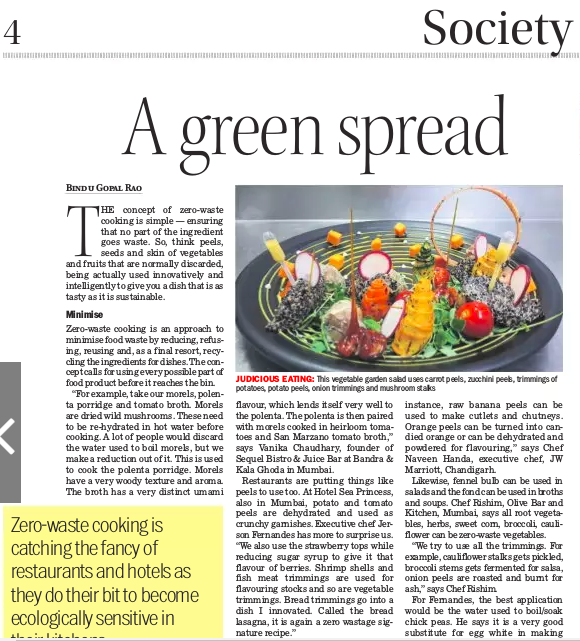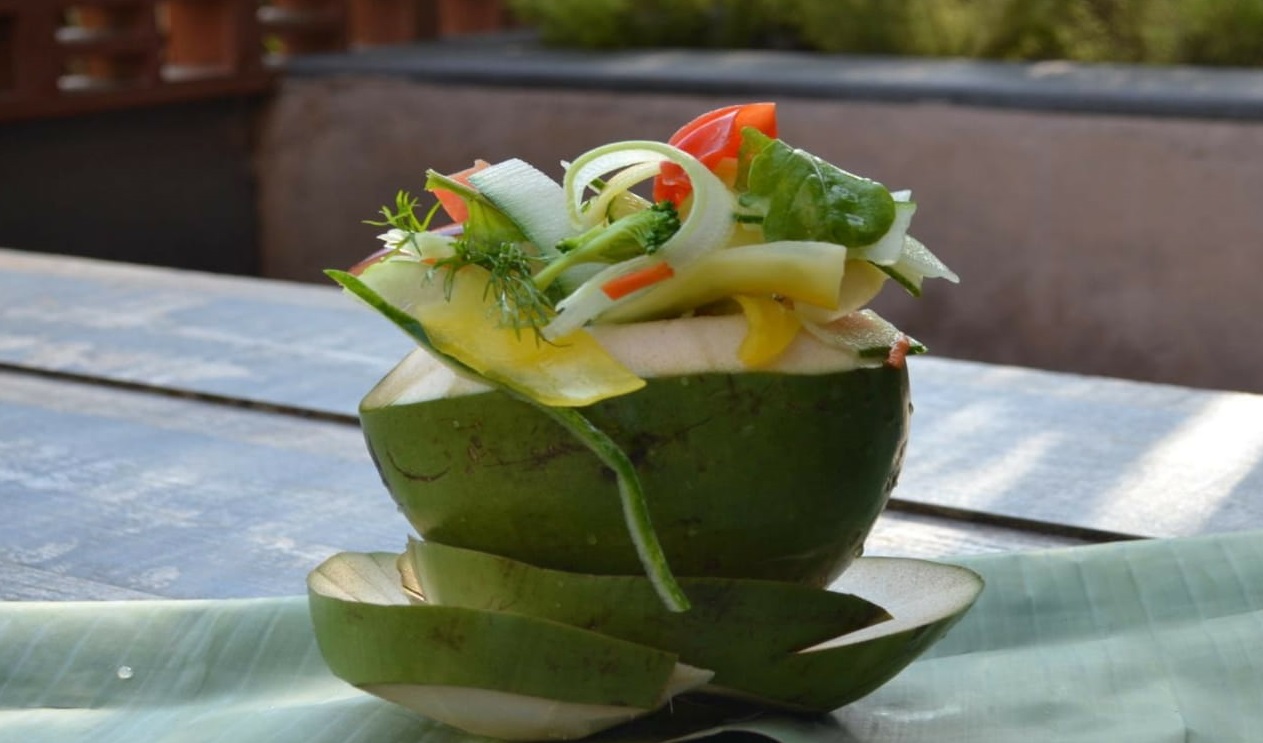Zero Waste Cooking is catching the fancy of restaurants and hotels as they do their bit to become ecologically sensitive in their kitchens.
The concept of zero waste cooking is simple – ensuring that no part of the ingredient is going waste. So think peels, seeds and skin of vegetables and fruits that are normally discarded, being actually used innovatively and intelligently to give you a dish that is as tasty as it is sustainable.
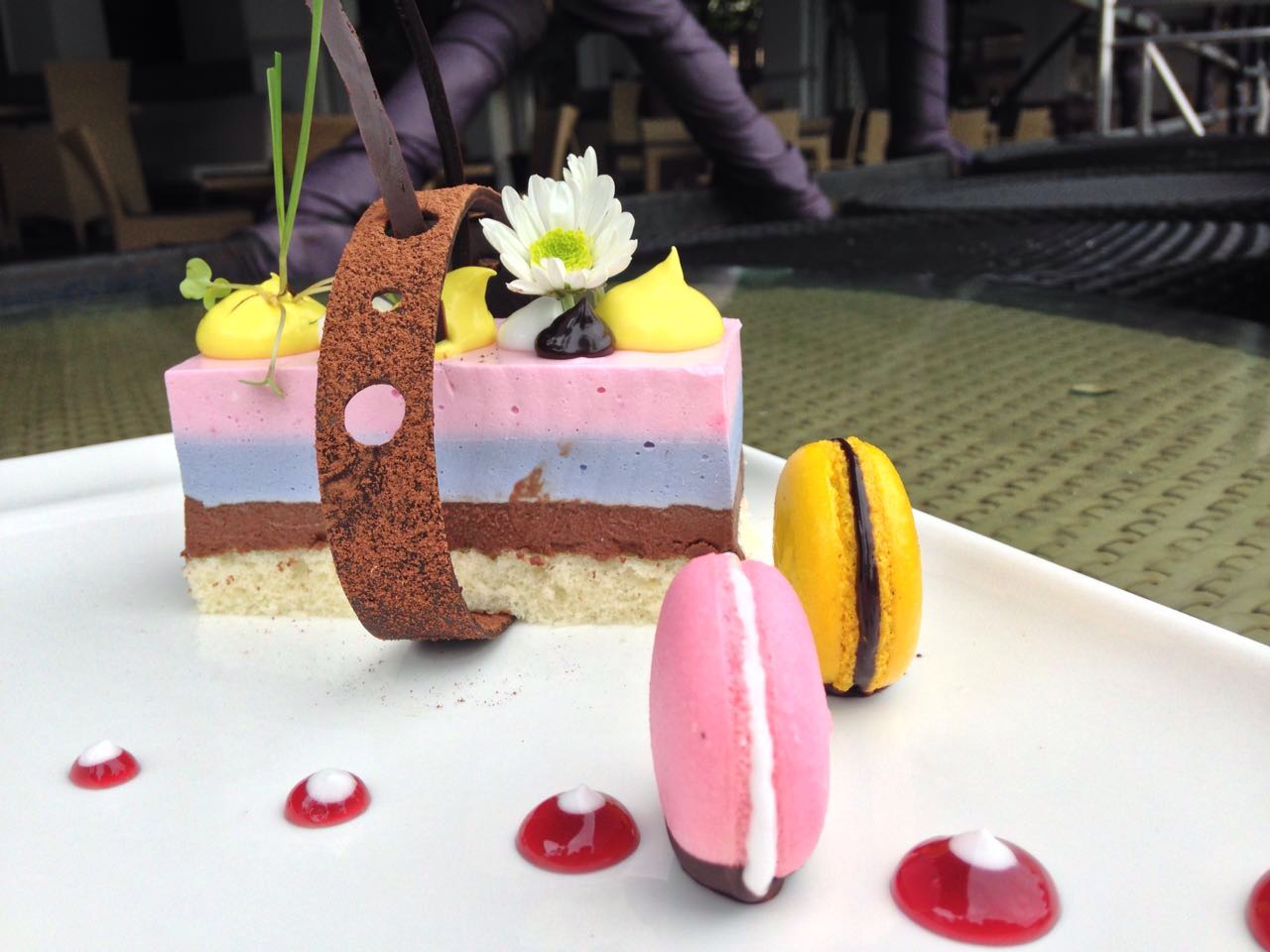
Cut the Waste
Zero Waste Cooking is an approach to minimize food waste by reducing, refusing, reusing and as a final resort, recycling the ingredients for dishes. The concept calls for using every possible part of food product before it reaches the bin. “For example take our Morels, polenta porridge and tomato broth. Morels are wild dried mushrooms. These need to be re hydrated in hot water before cooking. A lot of people would discard the morel broth (the water used to boil morels) after cooking the morels. Instead of discarding the broth, we make a reduction out of it. The reduction is used to cook the polenta porridge. Morels have a very woody texture and aroma. The broth has a very distinct umami flavour which lends itself very well to the polenta. The polenta is then paired with morels cooked in heirloom tomatoes and San Marzano tomato broth,” says Vanika Chaudhary, founder of Sequel Bistro & Juice Bar (Bandra & Kala Ghoda). Jerson Fernandes, Executive Chef, Hotel Sea Princess avers, “in our kitchens, we try to use everything that can be used in cooking. Leave alone tomato peels and potato peels which are dehydrated and used as crunchy garnishes, we also use the strawberry tops while reducing sugar syrup to give the syrup that amazingly flavorful touch of berries. Shrimp shells and fish meat trimmings are used for flavoring stocks, vegetable trimmings are again used in making the most delicious stocks. Bread trimmings go into a dish I innovated called the bread lasagna which again is a zero wastage signature recipe.”
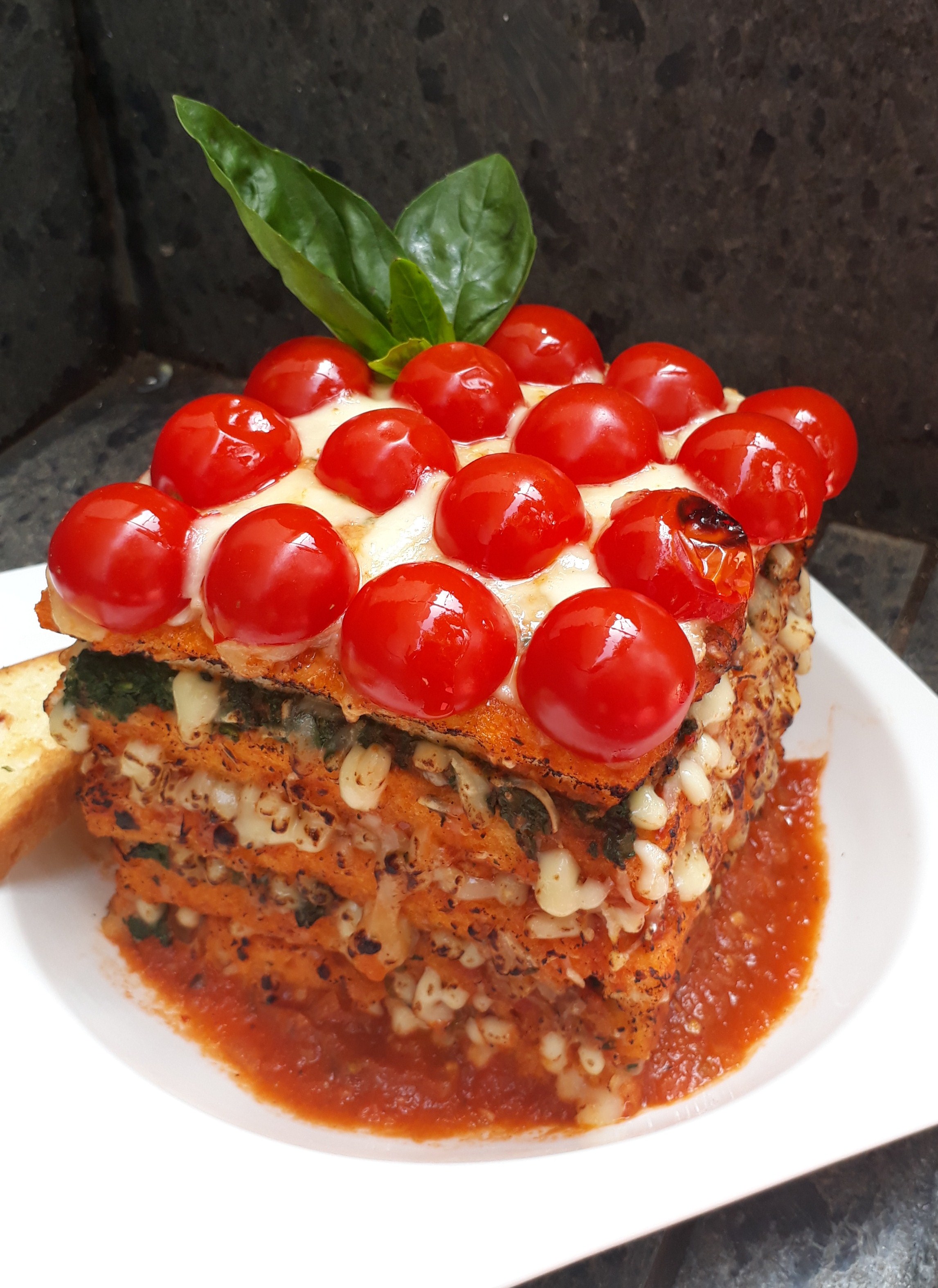
Veggie Fix
There are some vegetables that lend themselves to zero waste cooking particularly carrot whose leaves can be used to make pesto with basil or chimichuri with parsley. Beet Greens (from beetroot) are an excellent source of fibre, calcium, Vitamin A and K and these nutritious greens can used in smoothies/ soups/juices instead of being discarded as is the normal practice. One just needs to think creatively and use these for cooking innovative, sustainable and delicious zero waste food. “Raw banana peel, cauliflower stem, broccoli stem, orange peel, lemon peel, coriander roots, beetroot leaf, carrot leaf, radish leaf, carrot peel, parsley stem, potato peel, pea pods, and pineapple core lend themselves perfectly to rich and healthy delicacies. For instance, raw banana peels can be used to make cutlets and chutney. Orange peels can be turned into Candied Orange or can be dehydrated and made a powder for flavorings,” says Chef Naveen Handa, Executive Chef, JW Marriott Chandigarh. Likewise fennel bulb can be used in salads and the fond can be used in broths and soups. Chef Rishim, Olive Bar and Kitchen, Bandra West adds, “mostly all root vegetables, herbs, sweet corn, broccoli, cauliflower can be zero waste vegetables. We try to use all the trimmings. For example cauliflower stalks gets pickled, broccoli stems gets fermented for salsa, onion peels get roasted and burnt for ash.” Fernandes adds, “the best application for me to name would be the chick pea water (water in which the chick peas have been soaked or boiled). It is used as a very good substitute for egg white in making mousses and other desserts where egg whites are concerned. We use it making our signature vegetarian hazelnut mousse slab, chick pea water mousse and several other desserts.”
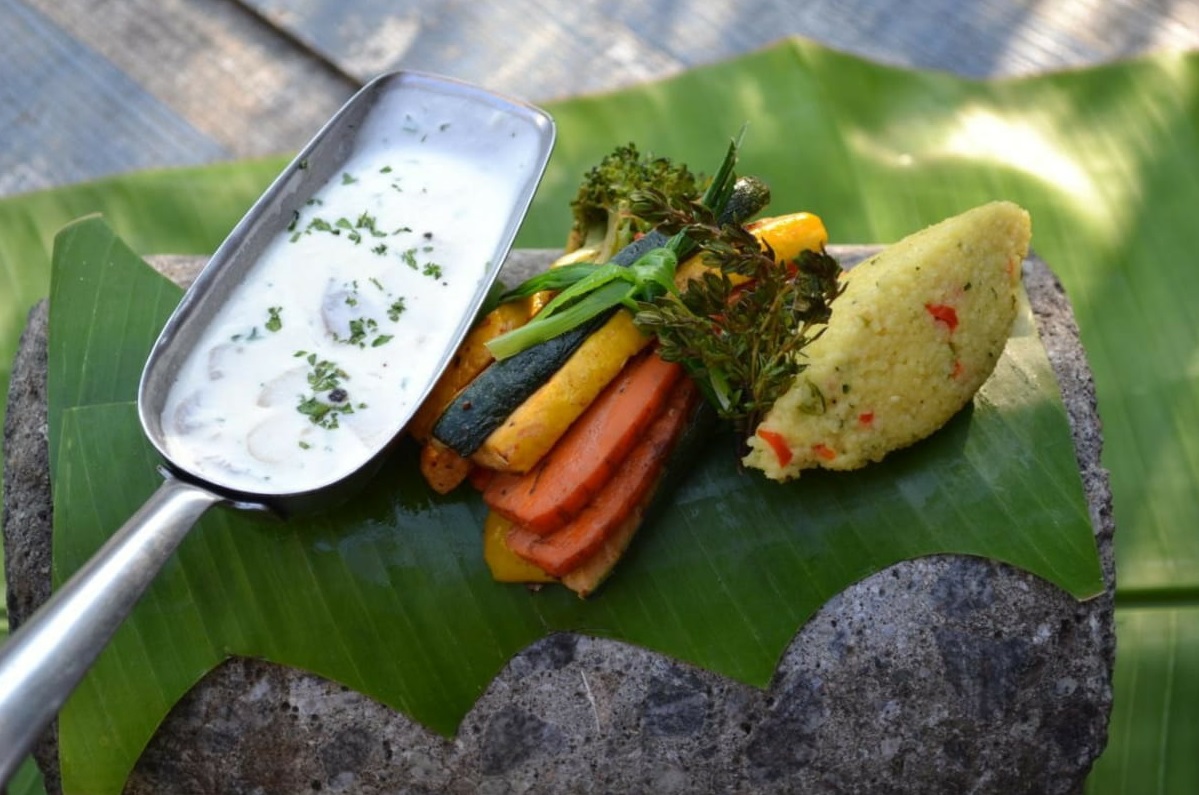
Sustainability Matters
Krishnan Dinakaran, Executive Chef, Three Dots and a Dash says, “cooking without discarding any part of the vegetable is not a new trend in Indian home kitchens. It was an essential part of Indian cooking until a few decades ago. Today, this trend of Zero waste cooking is being adopted by many chefs as well. Zero waste cooking, to put it very simply, is all about using or reusing every part of any vegetable. Zero waste cooking has a two-fold advantage – one it helps to reduce wastage and secondly it is healthy because it adds a lot of nutritive value to a dish.” Again to be able to use all parts of the vegetable is the need of the day. “Many of the trimmings from root vegetables are used in preparing the stock and stems of asparagus, cauliflower and broccoli are widely used for making soups. The stems of cilantro, mint, and parsley are especially tender and we mince them and add to any recipe containing their leaves. Herb stems can be blended and turned into pesto or compound herb butters. Woody rosemary and thyme stems will not be that tender, but you can always use them into the stock,” says Chef Gaurav Malhotra- Executive Chef, Novotel Hyderabad Convention Centre & HICC. Are you ready for a green kitchen?
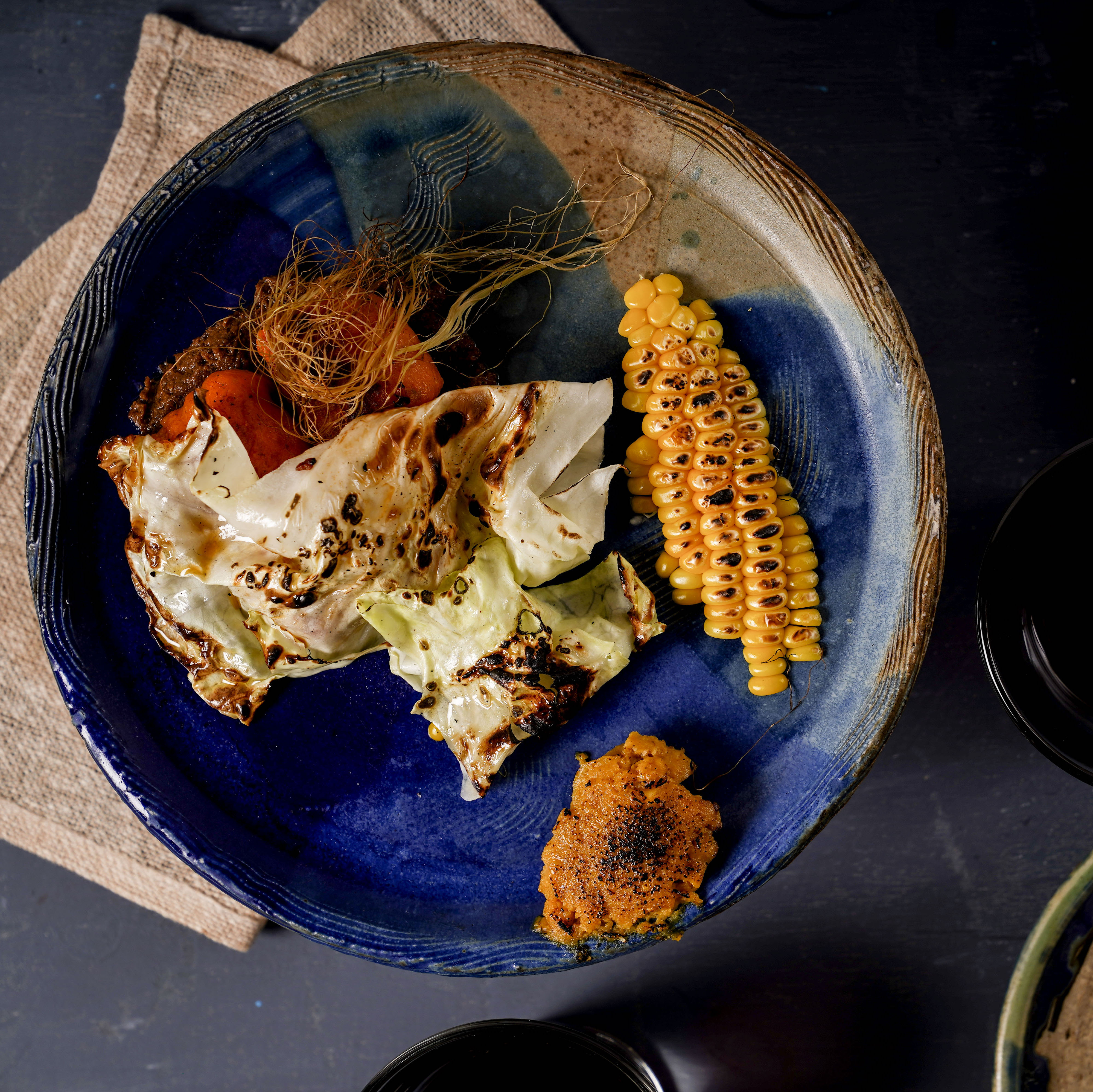
Sweet Corn Gnocchi (Courtesy Olive Bar and Kitchen)
Ingredients
- Sweet Corn 125gms
- Sweet Potatoes 50gms
- Flour 10gms
- Egg yolk 1
- For XO Sauce: Carrot peels- 40 gms, Onion peels- 40 gms, Corainder stalks 10gms, Kefir lime 10gms, Garlic 10gms (Feel free to add any vegetable trimmings. )
- For the Sweet Corn Puree: Cob- 50gms, Peel- 20gms
- Cabbage trimmings 50gms
- Husk 10gms
Method
- Roast the whole corn, take out the kernels and pass it through a rice sieve.
- Mix egg yolk and roasted sweet potato pulp.
- Roll it in cylinders and blanch. Sear them in foaming butter and finish with lemon juice.
- For the sauce: Take all the trimmings of carrots, sweet corn, coriander stalks, kefir lime stalks and garlic. Cook on low heat for about 20 mins, Pass the oil and keep at room temperature for about 36 hours, stirring very few hours
- For the puree: Chop the cob and blanch the peel. Fry the cob in a little oil until golden brown. Puree the fried cob and blanched peel, in a blender and pass through a fine sieve.
- Whatever trimmings of cabbage you have left over, cook it on high heat with no oil. We need a burnt BBQ sort of flavour and texture for the cabbage and once it is nicely charred mix in the XO sauce.
- Fry the husk in deep fat fryer and crumb on top of the dish.
This story first appeared in The Tribune Spectrum dated 10th March 2019 here: